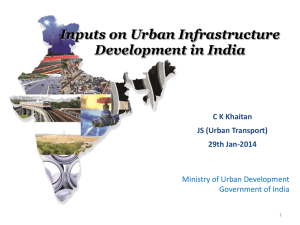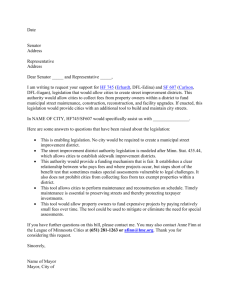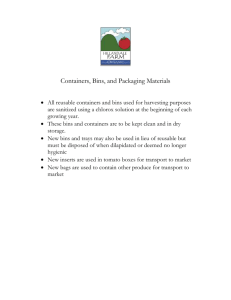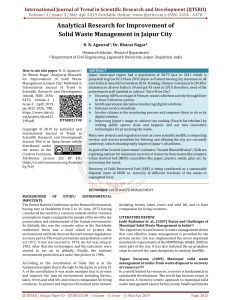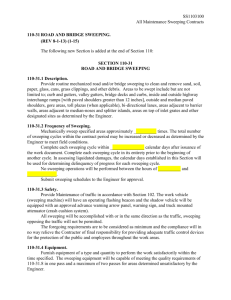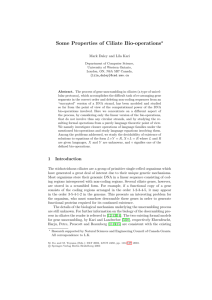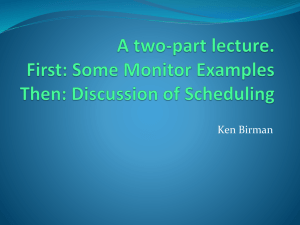Cost effectiveness of Solid Waste Management operation in Jaipur
advertisement
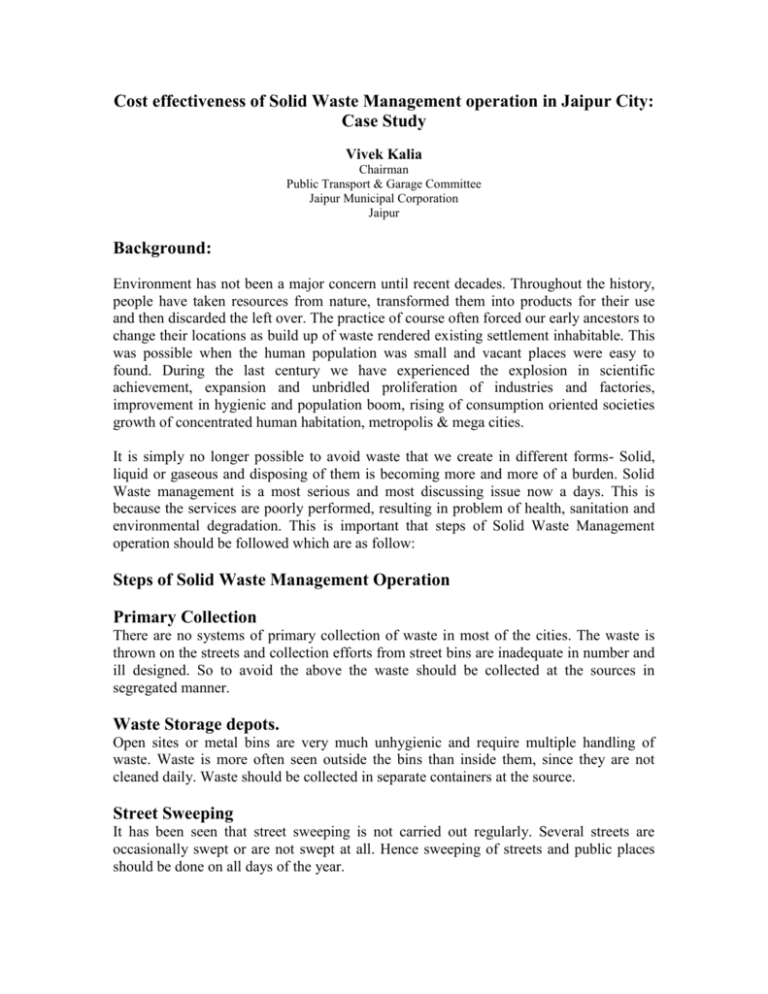
Cost effectiveness of Solid Waste Management operation in Jaipur City: Case Study Vivek Kalia Chairman Public Transport & Garage Committee Jaipur Municipal Corporation Jaipur Background: Environment has not been a major concern until recent decades. Throughout the history, people have taken resources from nature, transformed them into products for their use and then discarded the left over. The practice of course often forced our early ancestors to change their locations as build up of waste rendered existing settlement inhabitable. This was possible when the human population was small and vacant places were easy to found. During the last century we have experienced the explosion in scientific achievement, expansion and unbridled proliferation of industries and factories, improvement in hygienic and population boom, rising of consumption oriented societies growth of concentrated human habitation, metropolis & mega cities. It is simply no longer possible to avoid waste that we create in different forms- Solid, liquid or gaseous and disposing of them is becoming more and more of a burden. Solid Waste management is a most serious and most discussing issue now a days. This is because the services are poorly performed, resulting in problem of health, sanitation and environmental degradation. This is important that steps of Solid Waste Management operation should be followed which are as follow: Steps of Solid Waste Management Operation Primary Collection There are no systems of primary collection of waste in most of the cities. The waste is thrown on the streets and collection efforts from street bins are inadequate in number and ill designed. So to avoid the above the waste should be collected at the sources in segregated manner. Waste Storage depots. Open sites or metal bins are very much unhygienic and require multiple handling of waste. Waste is more often seen outside the bins than inside them, since they are not cleaned daily. Waste should be collected in separate containers at the source. Street Sweeping It has been seen that street sweeping is not carried out regularly. Several streets are occasionally swept or are not swept at all. Hence sweeping of streets and public places should be done on all days of the year. Transportation of Waste Transportation of waste is done by variety of vehicles such as three wheeler, tractors, trucks, dumper placers etc. The transportation system is not synchronized, thus the fleet of vehicles is not optimally utilized. Hence, the transportation system should synchronized. Processing disposal of waste Generally no processing of waste is done except in a few cities and disposal of waste is done in a very unscientific manner, resulting sites eliminate a foul smell, becomes breeding ground for files, rodent and pests and pose serious threat to underground water resources. Amongst, above-mentioned Solid Waste Management operation steps, transportation of waste are of high cost amongst them. Transportation of waste is done through a variety of vehicles such as three wheeler, trucks, and tractor. Due to ill planning and management of municipal bodies the vehicles are not optimally utilized. This is because the transportation system is not synchronized with the system of primary collection and bulk waste storage facilities. Due to ill planning of transportation system, the entire system of Solid waste management operation has become out dated and highly inefficient. This is resulting into problems related to health, sanitation and environmental degradation On the other hand, due to lack of knowledge about quality and quantity of waste, transportation cost has become very high. Jaipur Intervention Recognizing the problem of transportation, JMC has intensified efforts to make transportation system more efficient. The planning was done area wise therefore the quality and quantity of waste may be assessed. The areas were divided into three categories as Red, yellow, and green. Red is identified as 1st waste producing area and also having waste which produces foul smell like Fruit & Vegetable, Slaughter houses, Walled city area having dense population and no place for storing waste, Markets etc. Yellow is identified as second waste producing area and areas having mid level density of population, Green is identified as third or low waste producing area and areas having scattered population like newly developed or developing colonies. Based on this the route chart was decided for optimum utilization of transportation system. Hence the transportation system was synchronized with both primary collection and bulk waste storage facilities. Due to garage privatization, the transportation problems were sorted out and transportation system has become synchronized. The incentive scheme was initiated for driver and helpers against diesel & tyre saving, also for low maintenance cost. This helped in reducing transportation cost by saving diesel and synchronizing route chart. In 1999- 2000, the expenditure on transportation was 125 lakh. Diesel charges were increased in 2000. Accordingly, increase in cost of diesel was expected for transportation system of Municipal Corporation. It was expected that during 2000 expenditure on transportation would be Rs 150 lakh in 2000- 2001, but, surprisingly, it was only 83 lakhs in 2000-2001, due to synchronization of routes and incentive scheme.
